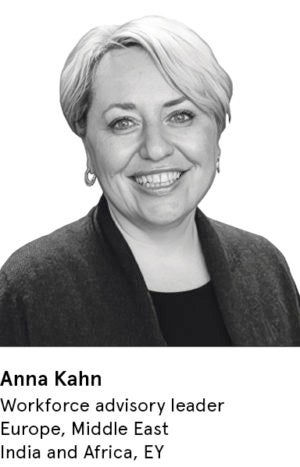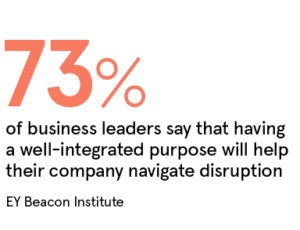 Until now, many businesses have been competing and measuring themselves on the success of their customer experience, but the lines between the customer and employee experience are blurring. As innovation drives increased competition and decreased windows of opportunity, competition for talent remains fierce and productivity continues to be a major factor on the bottom line.
Until now, many businesses have been competing and measuring themselves on the success of their customer experience, but the lines between the customer and employee experience are blurring. As innovation drives increased competition and decreased windows of opportunity, competition for talent remains fierce and productivity continues to be a major factor on the bottom line.
Combined, these factors have resulted in the employee experience fast reaching parity of priority in the boardroom. While the latter covers every imaginable contact between an individual and the organisation in which they work, their exposure to change and how they experience it is a central piece of the puzzle.
Stories of well-respected, global organisations that have failed to deliver the expected levels of growth following large-scale business transformation projects are well documented in the business press. According to Forbes, 84 per cent of companies fail in using transformation to deliver growth in the digital era.
Most have several things in common: lack of alignment to business purpose, inflexibility, an absence of data-led decision-making, and misalignment between human experiences and expectations. The need for speed; to accelerate transformation programmes in response to changing market demand, also increases associated cyber-risks. This makes enterprise-wide alignment even more important.
“Technology is exponentially increasing the speed of change as we experiment with and adopt new forms, models and experiences that are functional, convenient, intuitive and efficient,” explains EY’s Europe, Middle East, India and Africa workforce advisory leader Anna Kahn. “As adaptive humans, we clearly know how to transition from threatening conditions towards favourable ones, yet the ever-increasing demands from markets, business and workplace mean traditional change efforts are falling short.”
The way we take people and organisations through the change experience is deliberately different, personalised and immersive
Too tired to try?
Fatigue from constant change is so widespread that the topic even has its own Wikipedia entry. Successful change journeys work because they engage both heart and mind by balancing the “hard” business key performance indicators with crucial “soft” success factors, using empathy and purpose-led approaches to increase employee engagement.
“Everything we do is designed to support our clients and their people in maintaining their energy levels as they navigate complex, continuous change and realise the associated benefits,” Ms Kahn says.
In a break from traditional approaches, EY’s Change Experience combines analytic tools and detailed empathetic listening to give its clients the deepest insights into their workforce and culture. The approach is based on four principles:
01 Purpose
A well-defined purpose acts as the North Star and litmus test, maintaining focus on programme goals and meeting the basic human need to feel part of something meaningful. Not only does this appeal to the core values of younger generations, but it also acts as the glue that holds together workforces that are increasingly made up of a patchwork of different working patterns, including contingent and flexible workers. According to Ms Kahn, beginning with the “why” in everything that EY does sets the most powerful course for all change programmes.

02 Insight
According to a recent Gartner study, more than 90 per cent of organisations have not yet reached a transformational level of maturity in data and analytics. EY’s Change Insights tools enable the delivery of the firm’s Change Experience and help companies to bridge the gap in their own analytic capabilities, capturing volumes of near real-time data on employee sentiment, behaviours, involvement and readiness. Teams then use this data to provide actionable, analytics-driven insights and recommendations in easy-to-use interfaces that help businesses to identify when a programme is on or off track and target personalised interventions accordingly.
03 The personal
While exploring the impact of investments in employee experience, Forbes reported that experiential organisations had more than four times the average profit and more than twice the average revenue compared with their peers. Programme leadership typically underinvests in user insight, believing they already know their users. However, employees increasingly want the same personalised experiences in the workplace that they have as consumers. EY’s approach is focused on creating representative profiles of real employees combined with current and future-state journey/experience mapping.
04 Immersion
A deliberately different, interactive and collaborative approach to engaging workforces is designed to create enthusiasm, involvement and engagement. “We remember moments; those experiences that cut through the daily clutter,” says Ms Khan. As part of the EY Change Experience, the firm uses signature interventions and delivery techniques to engage and inspire. “The way we take people and organisations through the change experience is deliberately different, personalised and immersive, and designed to drive faster business adoption and a better return on investment,” she says.

Insights into action
No matter the starting point, be it seeking to place, enable or motivate a workforce, to change behaviours or adopt new ways of working, EY’s Change Experience framework connects performance against the change metrics that matter to drive required business outcomes. “We work collaboratively with our clients to deliver a consistent change experience that can flex to the unique needs of each transformation programme,” says Ms Kahn.
Ultimately, the business case for committing to a sharper focus on change experience is that the time gap between investments and the evidence of bottom line returns can be narrowed considerably. It’s an opportunity with obvious appeal and, by using data intelligently, it can become a measurable reality.
To find out more about Change Experience please contact [email protected]



